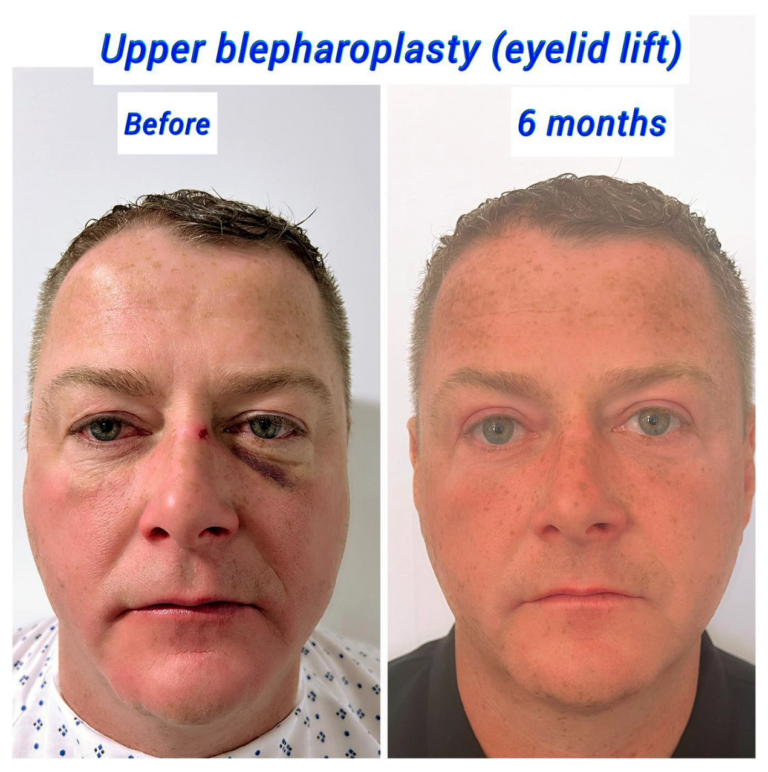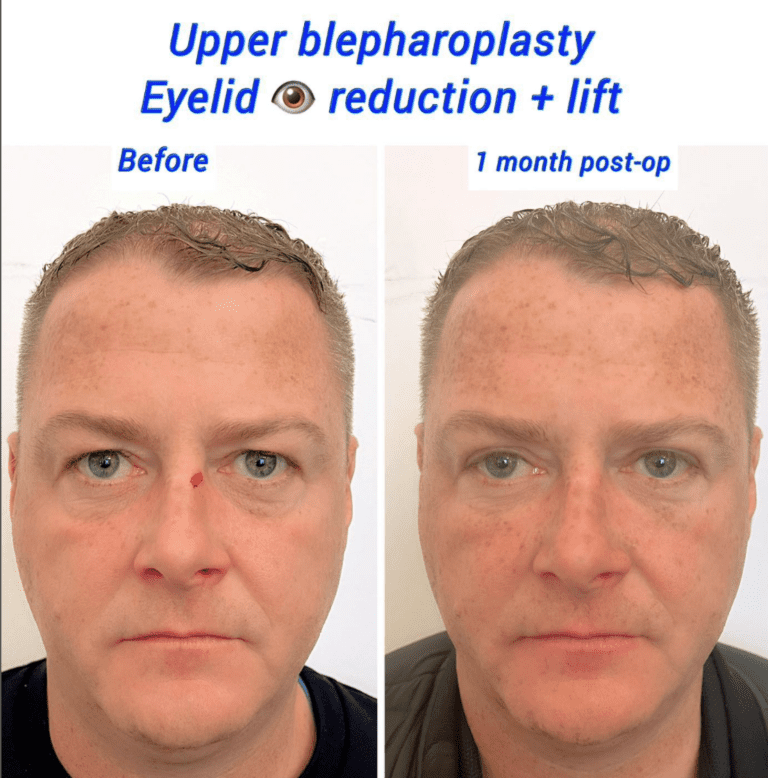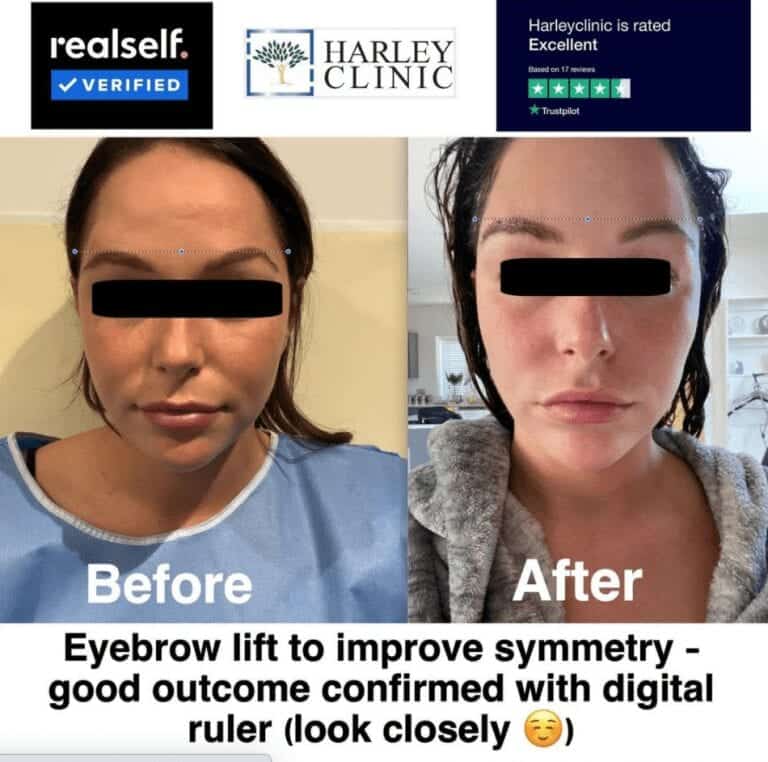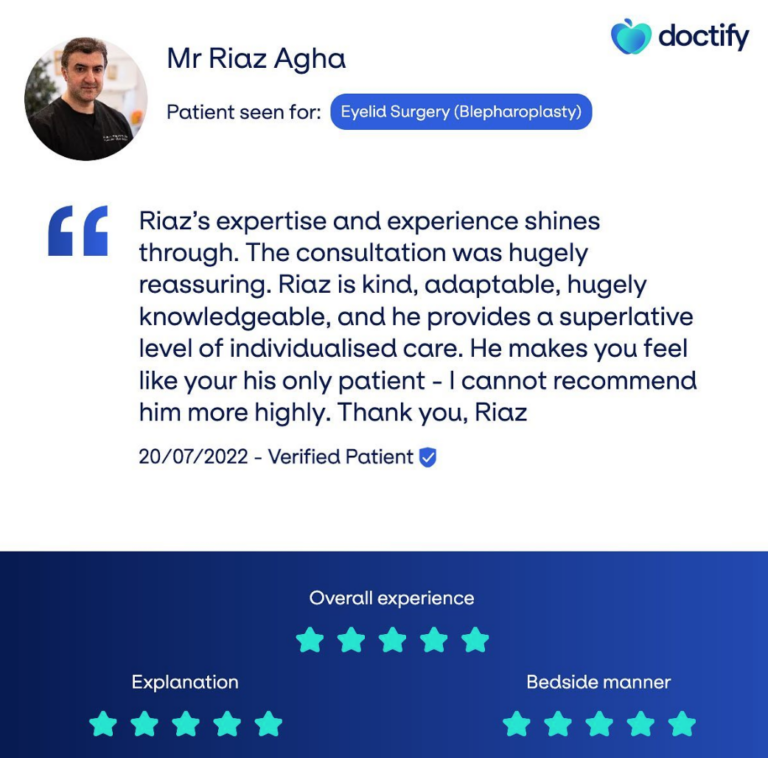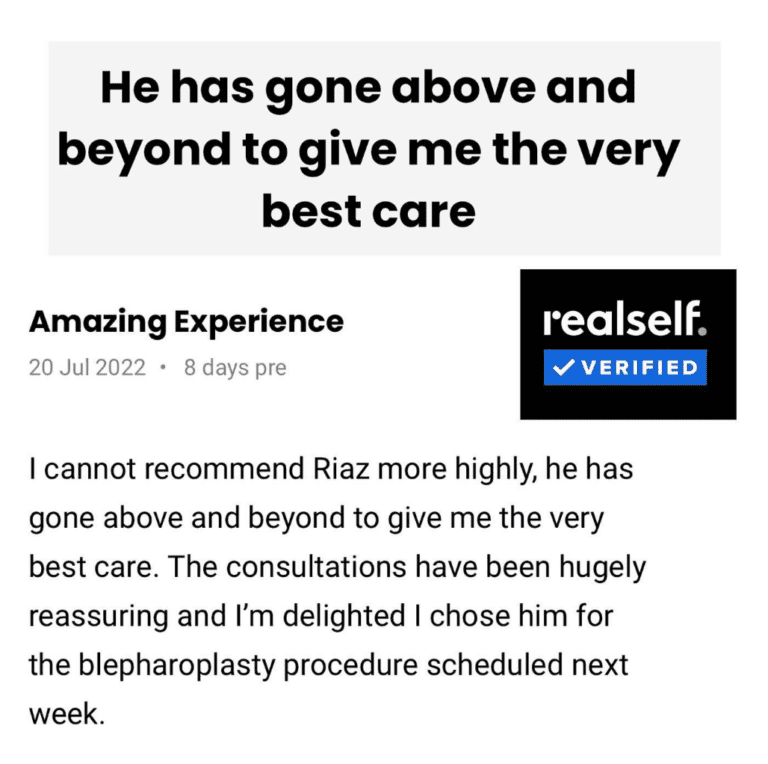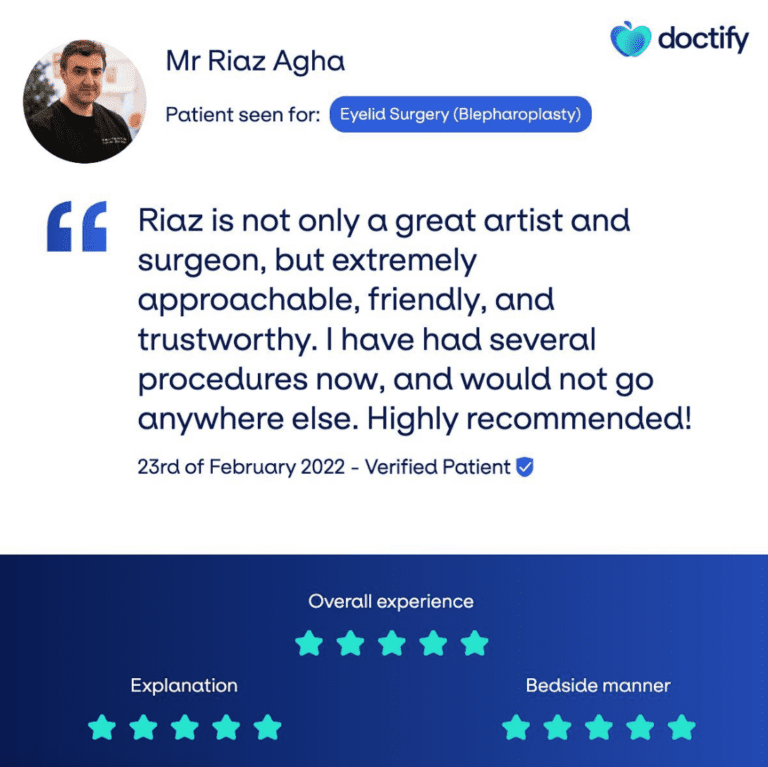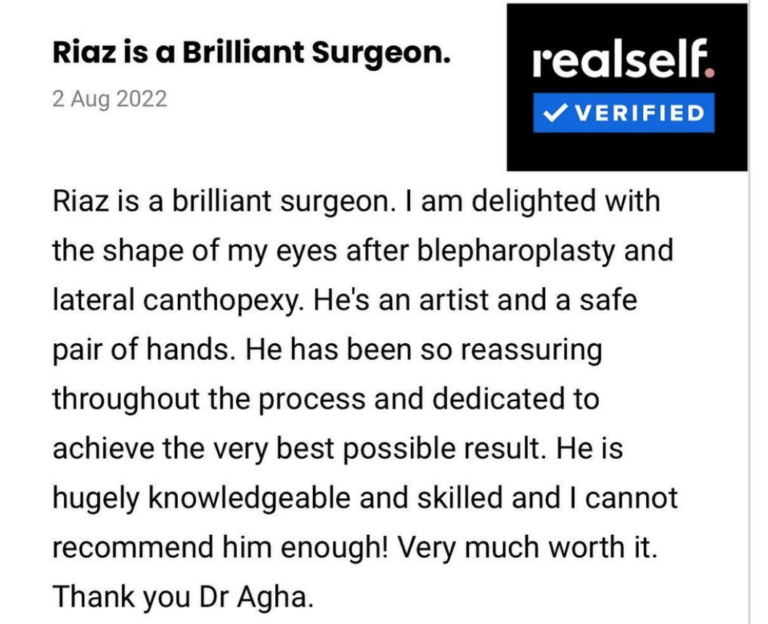Eyelid surgery is a common cosmetic treatment in the UK. As you get older, it’s entirely normal for the skin around the eyes to lose its elasticity. The muscle starts to relax, and the upper and lower eyelids can begin to droop. It’s not uncommon for eye bags to develop as the eyelid stretches, muscles weaken, and fat tends to gather. The effects of ageing can really show around the eyes. The procedure reshapes the eyelids and can make you look younger and rejuvenated.
Although many of us would love to outrun the ageing process, unfortunately, it’s something that happens to everyone. Droopy eyelids can make you look older than you are, and severe sagging can even impair your vision. If you’re considering eyelid surgery, here’s what to expect during and after your surgery.
What is Blepharoplasty aka Eyelid Surgery?
Eyelid surgery is also known as blepharoplasty, pronounced blef-uh-roe-plas-tee. It’s a type of surgery to repair droopy eyelids. It’s also known as eyelid reduction or eye bag removal.If you have excess skin, bags under your eyes, or droopy eyelids, you may already be considering eyelid surgery. The primary aim of the procedure is to improve droopy eyelids or eye bags.
You can get either upper or lower eyelid surgery or combine the two in one treatment. Depending on the results you’re looking to achieve, your surgeon will advise you on the best path to take. It’s a common procedure for both men and women who want to rejuvenate their facial appearance and combat those pesky signs of ageing.
As your skin loses elasticity, muscles begin to relax. This can result in folds of skin collecting in the upper lids and creases forming in the lower lids. Although ageing can play a role, some people may inherit the tendency for bags to form under the eyes earlier in life. It’s not always ageing to blame.
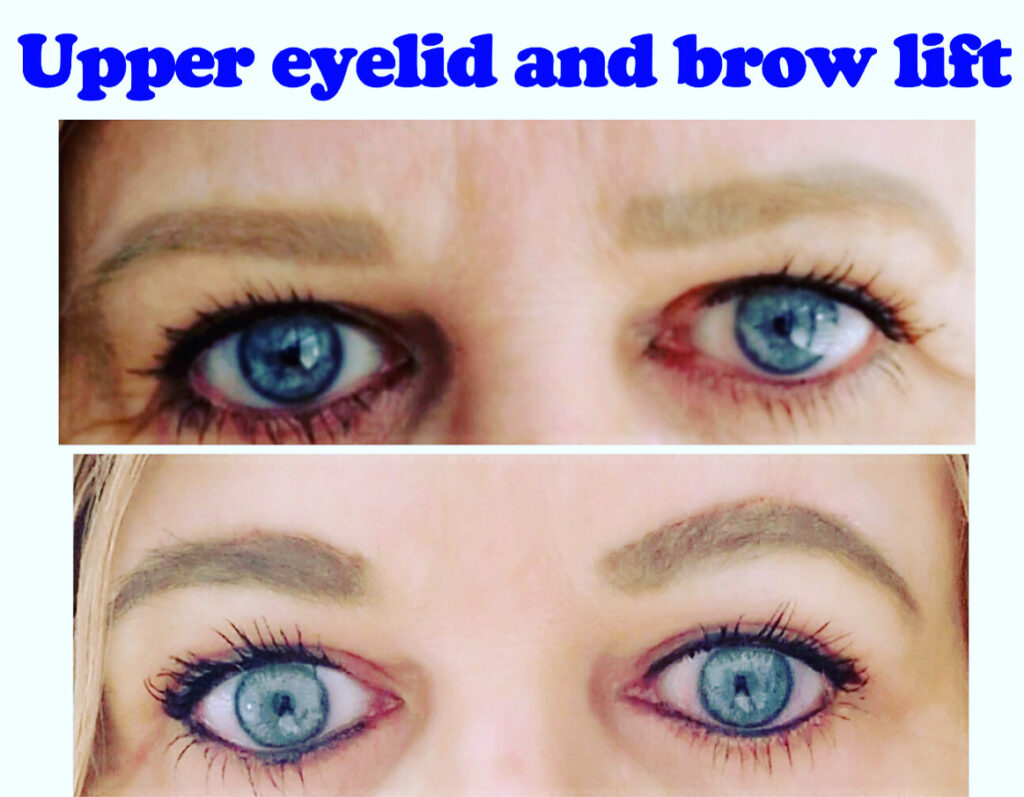
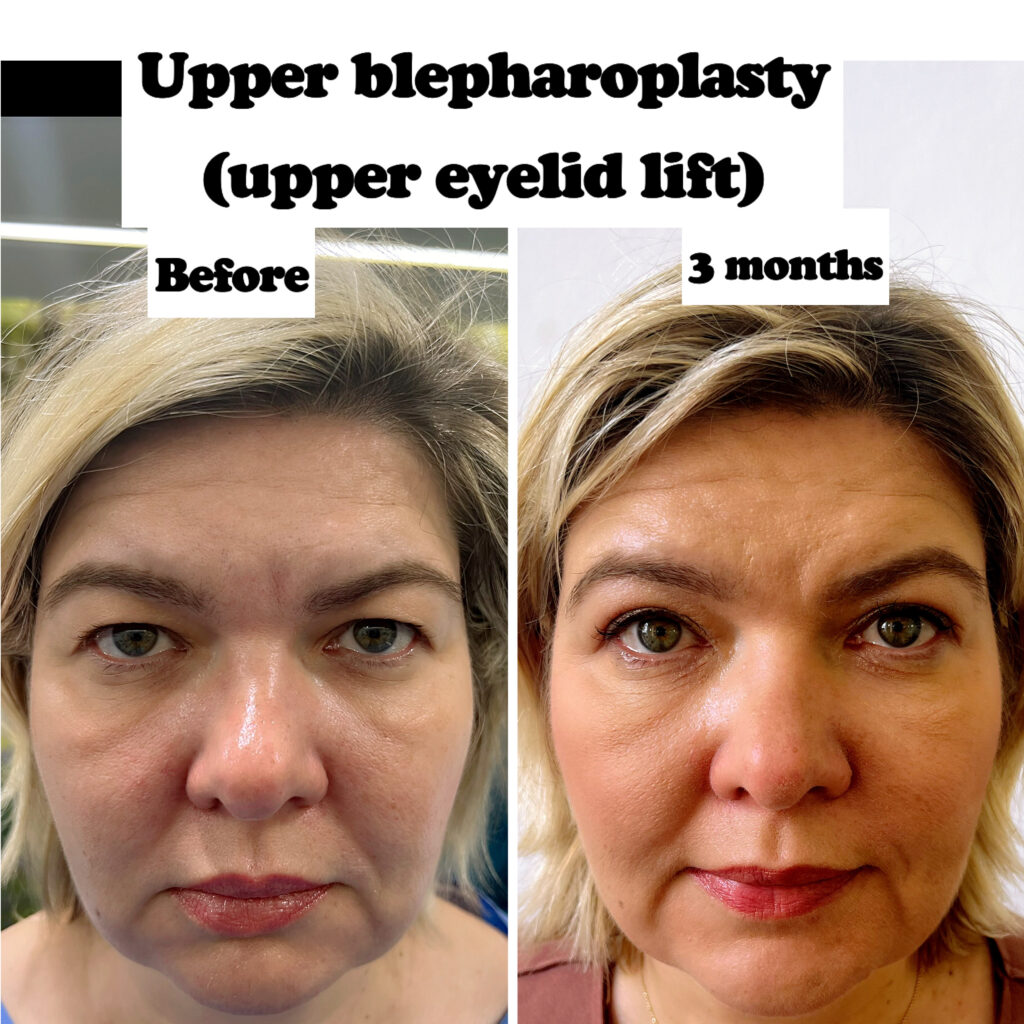
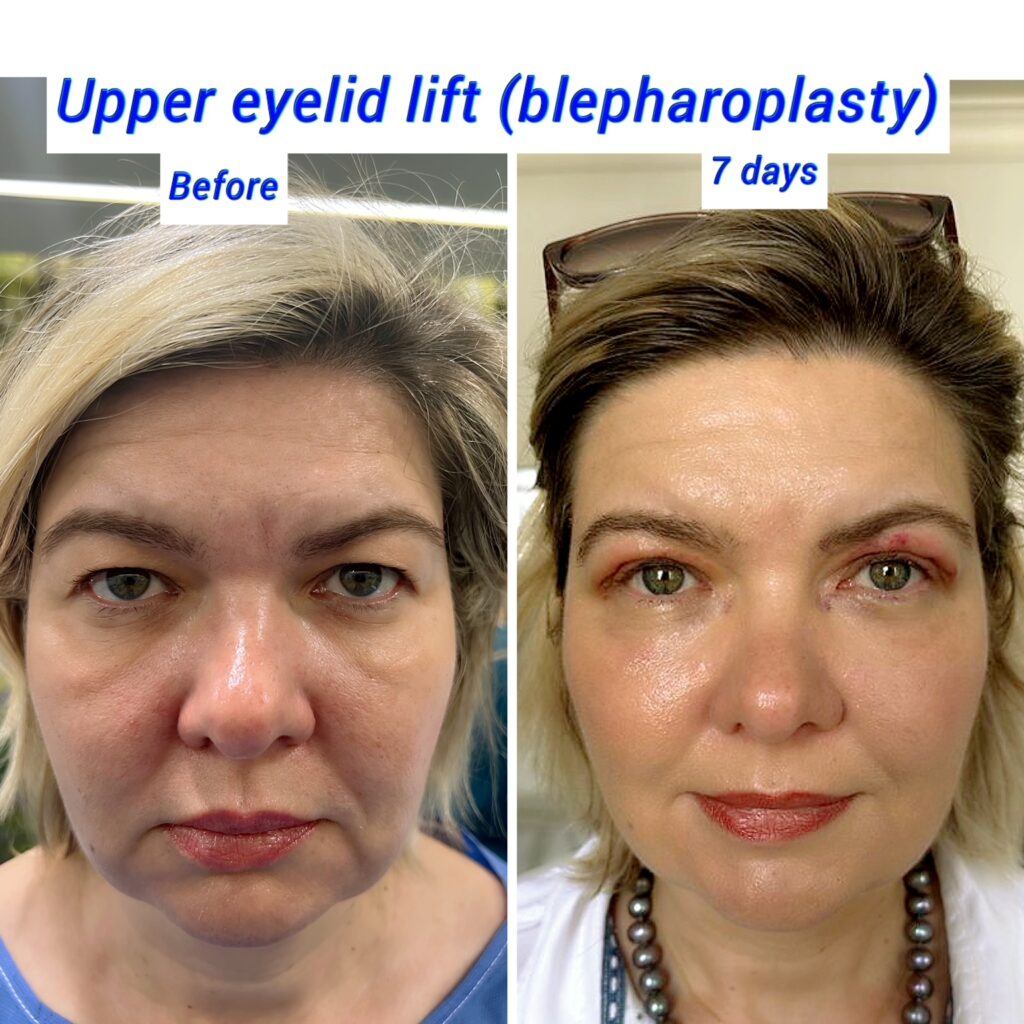
Eyelid surgery (Blepharoplasty): Quick Overview
- Surgery Time: 1-2 hours
- Anaesthetic: General
- Hospital Stay: Day case
- Time Off Work: 1 week
- Exercise: 6 Weeks
- Mobile: 24 hours
- Washing: Area has to be kept fully dry for 1 week
- Sleeping Position: On back in elevated position for 2-4 weeks
- Full Recovery: 2-4 weeks
How Do You Know if You Need Eyelid Surgery?
There are several reasons why an individual would get eye surgery. If you find that you can’t open your eyes fully because of drooping skin or have sagging skin around the eyelid, you may be considering eyelid surgery. Eyelid surgery can help with several issues such as:
- Puffiness or bags under the eyes
- Excess skin, fine lines around the lower eyelid
- Drooping eyelid skin
- Upper eyelid sagging skin
What Happens During Eyelid Surgery?
Before your eyelid surgery, you will come in for a consultation to discuss everything and help you prepare for your surgery. During your consultation, you find out all your options, risks, benefits, and surgery techniques. The aim is that you feel confident in your surgeon and have all the knowledge to make the decision to go ahead with the procedure.
The surgery takes up to two hours to perform and you will be under local anaesthetic. Your plastic surgeon will remove excess skin, fat, and tissue from the upper eyelids and lower eyelids during the procedure.
Upper Eyelid Surgery
First, your surgeon will make precise markings to indicate which areas of fat and skin will be removed. With the upper eyelid, incisions are made along the natural creases of the eyelid. Excess skin, fatty tissue, and muscle are then removed. The incision is closed. You won’t be able to see the scar as it’s in the crease of the eyelid.
In general, patients with dry eyes will have less tissue removed during upper eyelid surgery. After closing the incision, sutures or tissue adhesives are applied to the eyelid and eyebrow area to help the wounds heal.
Lower Eyelid Surgery
For the lower eyelid, generally, the incision is made just below the eyelashes. Your surgeon will then remove or reposition fat and also have the ability to add support to the tendons and muscles if necessary. The incision is then closed.
You can have either a lower eyelid or upper eyelid lift or combine the two in one procedure. You also have the option to get add other facial surgeries, such as a facelift or brow lift. Often, when patients get one treatment, they sometimes have multiple procedures, so they only need to recover once.
What are the Benefits of Eyelid Surgery?
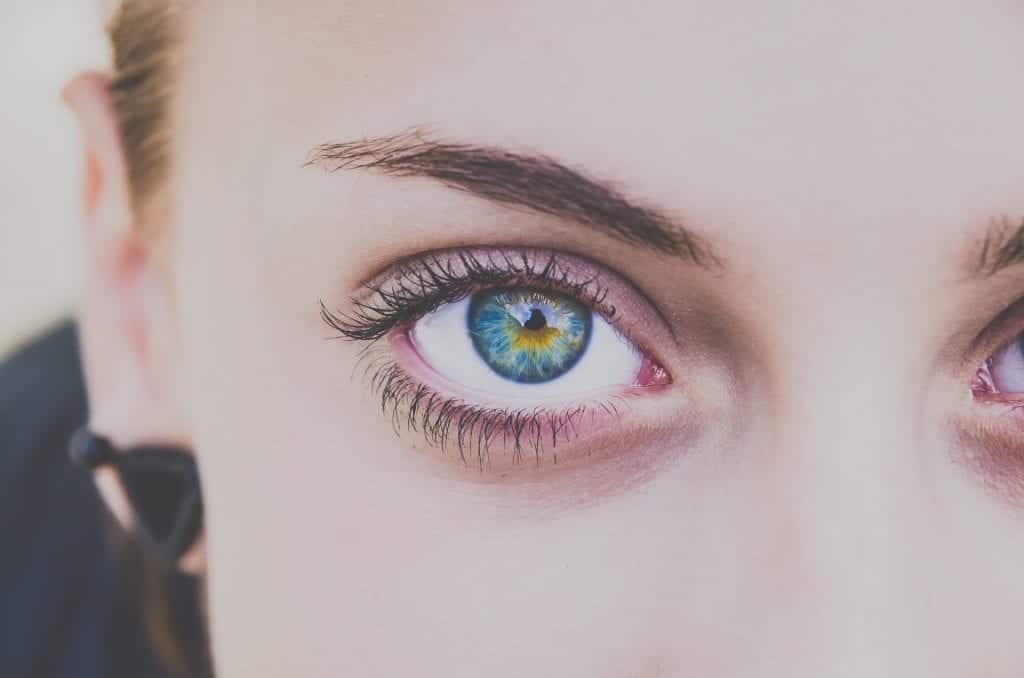
There are several benefits of eyelid surgery. Droopy eyelids can be a significant contributor to looking older. Eyelid surgery can really take the years off.
Benefits of eyelid surgery include:
- Reduce or eliminate vision problem caused by sagging skin.
- Make you look younger and more alert.
- Improve your self-image and boost confidence.
Who is the Ideal Candidate for Eyelid Surgery?
An ideal candidate for eyelid surgery is in good health and a non-smoker. If you have loose skin on the upper or lower eyelids or eye bags that make you look older and tired, eyelid surgery may help you. If you have diabetes or glaucoma, your plastic surgeon may recommend an alternative solution to eyelid surgery. This is something you will discuss during your consultation, where you will talk about your medical history during your assessment.
How Can You Prepare for Your Eyelid Surgery?
The best way to prepare for eyelid surgery is to be as healthy as possible. Make sure your weight is steady, follow a nutritious diet, and exercise regularly. Make sure the area is as clean as possible by having a shower 24 hours before your surgery.
What Kind of Results Can You Expect from the Procedure?
During your consultation with your surgeon, you will discuss what kind of results you can expect from the procedure. Most patients are happy with the outcome and report a boost in self-esteem and in the appearance around the eyelids.
Does Eyelid Surgery Leave Scars?
Scars from eyelid surgery are typically only visible when a person has their eyes closed. Someone would have to be close and know what they are looking for to see the scars. Usually, scars from eyelid surgery are minimal and heal well.
Is Eyelid Surgery Painful?
Eyelid surgery is normally performed under anaesthetic. The majority of patients only need over-the-counter pain killers to ease discomfort following surgery. It’s normal to experience dry eyes and numbness after your surgery for a short period of time.
How Long Does it Take to Recover From Eyelid Surgery?
The procedure is highly effective with relatively minimal downtime and immediate results. In the first few days after your surgery, you will feel bruising, and your vision will be a little blurry. After about four days, you will be able to watch TV and read.
The total recovery time depends on the type of surgery. But as a rough guide, you should be able to return to work in two weeks and regular activities and exercise in one month.
As every person is unique, the recovery time can vary slightly. This is why it’s essential to find a plastic surgeon that you trust who creates a recovery plan based on you. At Harley Clinic, you will have a consultation with your plastic surgeon, which includes a throughout health assessment and complete analysis.
Following your surgery, this is what you can expect from your recovery:
- 1 to 3 days – this is the time any bruising and swelling will be at its peak. Your surgeon will advise you on the best way to manage pain and feel more comfortable.
- 3 to 7 days – Your stitches will be removed, and the bruising and swelling will continue to go down.
- 10 days – you can expect to be back at work approximately 10 days after your surgery.
It’s important to know that if you go down the double eyelid surgery route (lower and upper eyelid lift), the recovery time is slightly longer. You would expect your recovery to take 2-3 weeks. Either way, you should see the final results after about 6 months.

6 Aftercare Tips for Eyelid Surgery
Here are six aftercare tips for eyelid surgery to help speed up recovery and make you feel more comfortable. Recovery from eyelid surgery is relatively easy, and after a few weeks, no one will be able to tell you’ve even had surgery.
1. Wear Dark Sunglasses
Following your surgery, you may be a little sensitive to light. Take some dark glasses with you to wear after your operation.
2. No Contact Lenses (2 weeks)
Avoid wearing contact lenses for at least 2 weeks after your surgery. You can wear eyeglasses but should not wear contact lenses for a little while.
3. Avoid Strenuous Activities
While you’re recovering, avoid any strenuous activity, heavy lifting, or exercise. Try to avoid bending at the waist and check with your surgeon before resuming exercise and lifting.
4. Get Plenty of Rest
To heal properly, you need to get plenty of rest. Get some sleep and stay hydrated. Sleeping with your head a little raised helps to prevent swelling.
5. Apply Antibiotic Cream or Eye Drops
Your surgeon will advise you on what and how to apply either eye drops or antibiotic cream.
6. No Creams or Makeup (2 weeks)
You can take showers from the neck down following your surgery but should avoid getting your face wet until your surgeon gives you the go-ahead. Don’t use any makeup or creams for at least 2 weeks on the surgical site.
In general, you need to make the biggest adjustments to your routine in the first 2 weeks following your surgery. After that, you can head back to work and get stuck into your everyday life. The recovery timeline is relatively short, and by adhering to your aftercare recommendations, you allow your body to heal effectively and get the best results.
Are There Alternative Treatments to Eyelid Surgery?
There are some potential risks and complications of eyelid surgery. It’s important to be fully aware of any potential issues before you decide to get any surgery. As you will be going under local anaesthetic, there is always a general risk associated with any surgery. Other potential complications and risks include:
- Infection
- Bleeding
- Eye irritation
- Difficulty closing eyes
- Skin discolouration
- Injury to eye muscle
- Eyesight issues
Now you know what to expect from eyelid surgery, you can do your own research, speak to a plastic surgeon, and find out if the procedure is right for you.
Some of our patients use non-surgical treatments like anti-wrinkle injections after eyelid surgery to smooth out their facial appearance. This is something we can discuss at your consultation.
The eyes are such an important feature on the face. It’s because of this that eyelid surgery has become increasingly popular in the past few years. Things like smoking and sun exposure tend to magnify sagging eyelids. Eyelid surgery is an effective procedure that can make the skin around the eyes look firmer and more youthful.
To book a consultation today, please call 0203 582 4947 or email [email protected].











